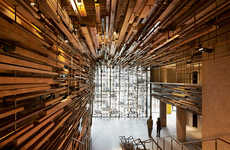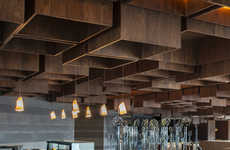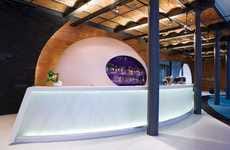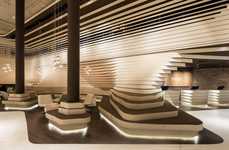
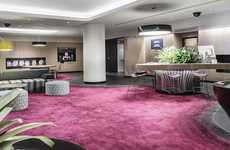

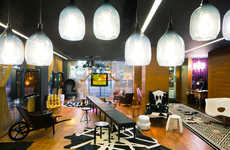
An emphasis on social engagement has hotels turning to more communal interior designs
Implications - As social interaction becomes more of a priority, particularly for young consumers, typically secluded activities are getting revamped to encourage interaction. Designing hotel spaces to be adaptable to social situations and online engagement, hospitality brands are seeking to get travelers more involved during their stay, reflecting a shift towards more participatory forms of travel.
Trend Themes
1. Social Interaction Design - Hotels are designing spaces that promote social interaction with a mix of vintage and modern furnishings to create a balance between eras.
2. Open-concept Lobbies - Hotels are opening up lobbies and incorporating casual and comfortable spaces that encourage guests to interact with self-serve options and work or socialize.
3. Retrofitted Designs - Hotels are transforming historic buildings and incorporating elements of their history while using materials salvaged from the building to give them a unique and luxurious feel.
Industry Implications
1. Hospitality - The hospitality industry can use social interaction design in hotel spaces to encourage guests to engage with each other and create memorable experiences.
2. Architecture - Architects can incorporate open-concept lobbies in hotel designs to create functional and adaptable spaces that promote interaction and comfort for guests and staff alike.
3. Historic Preservation - The retrofitting of historic buildings presents an opportunity for architects to create unique and luxurious hotel spaces that incorporate elements of the building's history, preserving its identity while creating new functional spaces.
4 Featured, 32 Examples:
378,609 Total Clicks
Date Range:
Jan 14 — Apr 15
Trending:
Warm
Consumer Insight Topics:








